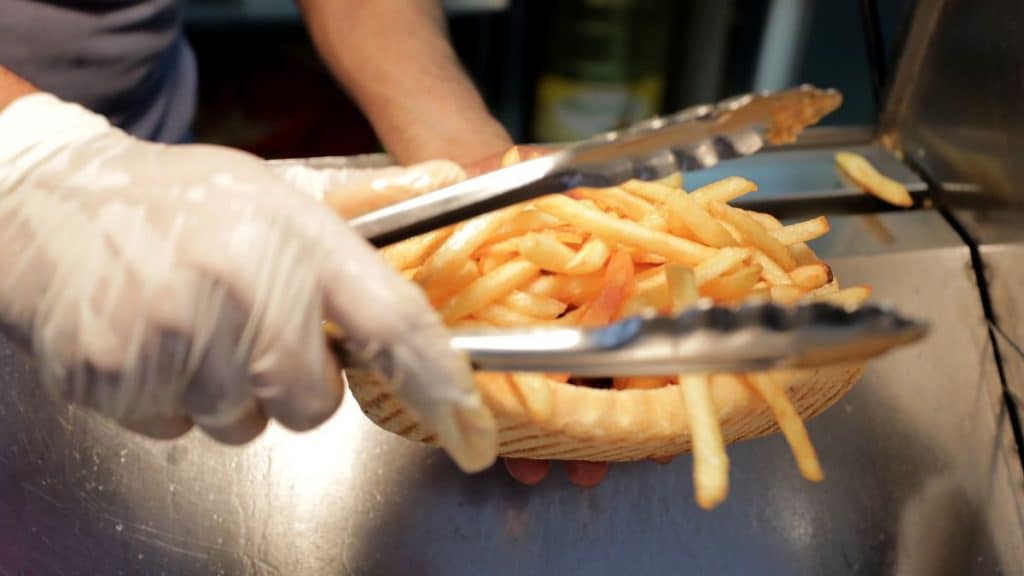Thin, crisp, and so very indulgent, there’s nothing more addictive than French Fries. These deep-fried potato fritters have caught the fancy of foodies across continents and have become, perhaps, the best thing on a platter.
In India, these delicious and scrumptious French Fries only came in 1992 when American processed food company, Lamb Weston, began importing them to high-end hotels. And it seems the love story only grew from there. By the mid-2000s, the country was importing more than 5,000 tonnes of French Fries annually, with it peaking at 7,863 tonnes in 2010-11.
But cut to 2023-2024, India’s import of French Fries has reduced to almost zero. In fact, the country exported 135,877 tonnes of French Fries valued at Rs 1,478.73 crore in the same period, becoming a leader in the market.
But how did this turnabout occur?
India’s love for these golden fried crispy fritters began in 1992 when Lamb Weston, an American processed food company, initiated its first imports of frozen French Fries to India, targeting upscale restaurants.
Four years later, Canada’s multinational food company McCain Foods followed suit and became the sole supplier of frozen French Fries to
McDonald’s after the US food giant opened its first outlet in the country.
Since then, India’s consumption of
frozen French Fries has only grown leaps and bounds (can you really blame us?). India’s domestic French fry consumption is estimated at 100,000 tonnes annually, valued at Rs 1,400 crore.
But greater consumption also means higher imports of the food item. The import of these straight-cut potatoes grew to over 5,000 tonnes by the mid-2000, soaring to a record high of 7,863 in 2010-2011.
However, the narrative shifted in 2023-2024. India went from being a major importer of the fast food to a major exporter.
Data shows that the country exported 1,35,877 tonnes of French Fries valued at Rs 1,478.73 crore. During April-October last year, exports were 1,06,506 tonnes and worth Rs 1,056.92 crore.
But who is India exporting to now? These exports are mostly to Southeast Asian countries, such as the Philippines, Thailand, Malaysia, Indonesia, and Vietnam. Countries such as Saudi Arabia, the United Arab Emirates and Oman are also a significant market for India’s French Fries. Moreover, India’s exports of these fluffy potato fritters have also reached the shores of Japan and Taiwan.
As Haresh Karamchandani, managing director and group CEO of HyFun Foods Pvt Limited that is one of India’s major exporting French Fries exporting company, said to Indian Express, “We have become an alternative supplier to these markets that previously imported only from Europe and the US.”
Notably, India’s exports of French Fries have exceeded its domestic consumption.
But how did India attain this transformation and take over the French fries market? There are multiple factors at play, the biggest being the country’s potato famers choosing to grow more of the processing-grade potato varieties, which is used to make French Fries.
Let’s understand this better. To make frozen French Fries, one requires processing-grade potato varieties such as Santana, Innovator, Kennebec, Kufri Frysona and Kufri FryoM and Lady Rosetta and Kufri Chipsona. While Sanatana, Innovator and Lady Rosetta mostly from Netherlands-based companies, the Kufri varieties are developed by the government-owned Central Potato Research Institute, Shimla.
Moreover, as HyFun Foods explains
contract farming has benefited them greatly. For the unaware, contract farming is when farmers and buyers draw up agreements that outline how farm products will be produced and marketed.
Explaining this further, HyFun said that for the current season, it plans to buy 400,000 tonnes from 7,250 farmers in Gujarat, Madhya Pradesh and Uttar Pradesh. For this, the firm has offered farmers Rs 13.8 per kg for their produce.
Iscon Balaji Foods, another major exporter of frozen French Fries, said that it has introduced three new European varieties.
In addition to this, these exporters also help provide potato farmers with good quality disease-free seeds.
There are also efforts being made by these companies to bring down the cost of cultivation. For instance, HyFun conducted ‘HyFarm paathshala’ demonstrations last September in which it was shown how planting potato seeds in two rows within a 48-inch bed width will help increase their yield. Traditionally, potato seeds are planted in four rows and a 60-inch bed. With this, HyFarm has been able to reduce the number of seeds — from 25 to 19 bags per acre — cut down the use of fertilisers by 20 per cent and water by 50 per cent. What this essentially means is less capital required to grow potatoes.
Stating the benefits of following this model, Alpesh Navinbhai Patel, who cultivates the Santana variety on 180 acres in Gujarat, told Indian Express, “At Rs 1,560 per bag, my seed cost alone today is Rs 39,000 per acre. If I use six bags less of seed, two bags each of di-ammonium phosphate and muriate of potash (from three), and two bags of urea (from 2.5), it translates into savings of Rs 12,500 per acre. That’s as good as being paid Rs 0.9/kg more for my potato,” Patel told Indian Express.
According to data provided by businessresearchcompany.com, the French Fries market size has grown strongly in recent years. It will grow from $17.45 billion in 2024 to $18.54 billion in 2025 at a compound annual growth rate (CAGR) of 6.2 per cent.
Experts note that the rise in demand for ready-to-eat food will propel the growth of the French Fries market going forward.
And today, thanks to long and sustained efforts, India has emerged as a leader. Data shows that revenue from the French Fries market in India will rise to $2.25 billion by 2034. This from the $1.38 billion in 2023.
What can we say? The appetite for French Fries seems insatiable and India is fulfilling that potato mania.
With inputs from agencies
Link to article –
A big fry: How India went from importing frozen French Fries to becoming a leading exporter
